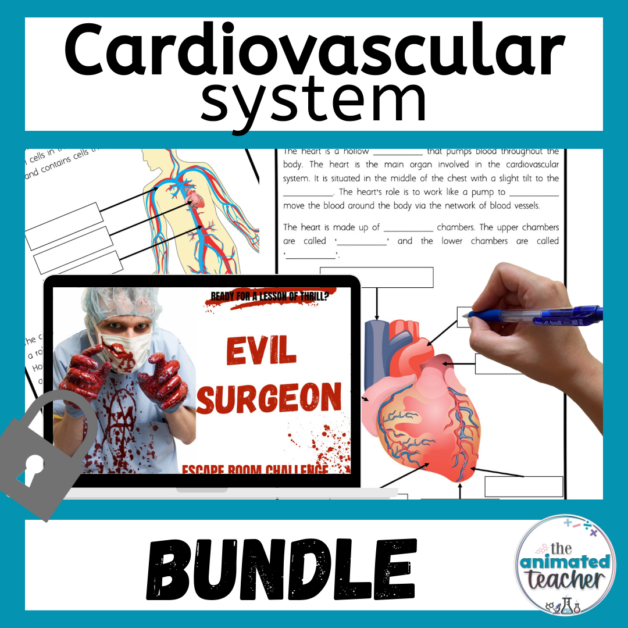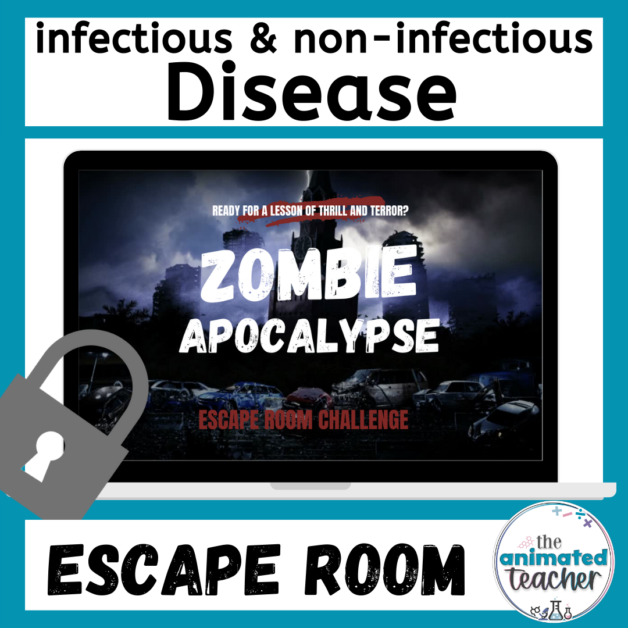
9 Great Ways to Teach Variables in Science Experiments
9 Great Ways to Teach Variables in Science Experiments
Science is a journey of exploration and discovery, and at the heart of every scientific experiment lies the concept of variables. Variables in science experiments are the building blocks of experimentation, allowing scientists to manipulate and measure different elements to draw meaningful conclusions.
Teaching students about variables is crucial for developing their scientific inquiry skills and fostering a deeper understanding of the scientific method.
In this blog post, we’ll explore the importance of teaching variables in science experiments, delve into the distinctions between independent, dependent, and controlled variables, and provide creative ideas on how to effectively teach these variable types.
So grab a coffee, find a comfy seat, and relax while we explore fun ways to teach variables in science experiments!

The Importance of Teaching Variables in Science Experiments:
-
Foundation of Scientific Inquiry: Variables form the bedrock of the scientific method. Teaching students about variables helps them grasp the fundamental principles of scientific inquiry, enabling them to formulate hypotheses, design experiments, and draw valid conclusions.
-
Critical Thinking Skills: Understanding variables cultivates critical thinking skills in students. It encourages them to analyze the relationships between different factors, question assumptions, and think systematically when designing and conducting experiments.
-
Real-world Application: Variables are not confined to the laboratory; they exist in everyday life. Teaching students about variables equips them with the skills to critically assess and interpret the multitude of factors influencing phenomena in the real world, fostering a scientific mindset beyond the classroom.
In addition to the above, understanding scientific variables is crucial for designing an experiment and collecting valid results because variables are the building blocks of the scientific method.
A well-designed experiment involves the careful manipulation and measurement of variables to test hypotheses and draw meaningful conclusions about the relationships between different factors. Here are several reasons why a clear understanding of scientific variables is essential for the experimental process:
1. Precision and Accuracy: By identifying and defining variables, researchers can design experiments with precision and accuracy. This clarity helps ensure that the measurements and observations made during the experiment are relevant to the research question, reducing the likelihood of errors or misinterpretations.
2. Hypothesis Testing: Variables in science experiments are central to hypothesis formulation and testing. A hypothesis typically involves predicting the relationship between an independent variable (the one manipulated) and a dependent variable (the one measured). Understanding these variables is essential for constructing a hypothesis that can be tested through experimentation.
3. Controlled Experiments: Variables, especially controlled variables, enable researchers to conduct controlled experiments. By keeping certain factors constant (controlled variables) while manipulating others (independent variable), scientists can isolate the impact of the independent variable on the dependent variable. This control is essential for drawing valid conclusions about cause-and-effect relationships.
4. Reproducibility: Clear identification and understanding of variables enhance the reproducibility of experiments. When other researchers attempt to replicate an experiment, a detailed understanding of the variables involved ensures that they can accurately reproduce the conditions and obtain similar results.
5. Data Interpretation: Knowing the variables in science experiments allows for a more accurate interpretation of the collected data. Researchers can attribute changes in the dependent variable to the manipulation of the independent variable and rule out alternative explanations. This is crucial for drawing reliable conclusions from the experimental results.
6. Elimination of Confounding Factors: Without a proper understanding of variables, experiments are susceptible to confounding factors—unintended variables that may influence the results. Through careful consideration of all relevant variables, researchers can minimize the impact of confounding factors and increase the internal validity of their experiments.
7. Optimization of Experimental Design: Understanding variables in science experiments helps researchers optimize the design of their experiments. They can choose the most relevant and influential variables to manipulate and measure, ensuring that the experiment is focused on addressing the specific research question.
8. Applicability to Real-world Situations: A thorough understanding of variables enhances the applicability of experimental results to real-world situations. It allows researchers to draw connections between laboratory findings and broader phenomena, contributing to the advancement of scientific knowledge and its practical applications.
The Different Types of Variables in Science Experiments:
There are 3 main types of variables in science experiments; independent, dependent, and controlled variables.
1. Independent Variable:
The independent variable is the factor that is deliberately manipulated or changed in an experiment. The independent variable affects the dependent variable (the one being measured).
Example: In a plant growth experiment, the amount of sunlight the plants receive can be the independent variable. Researchers might expose one group of plants to more sunlight than another group.
2. Dependent Variable:
The dependent variable is the outcome or response that is measured in an experiment. It depends on the changes made to the independent variable.
Example: In the same plant growth experiment, the height of the plants would be the dependent variable. This is what researchers would measure to determine the effect of sunlight on plant growth.
3. Controlled Variable:
Controlled variables, also called constant variables, are the factors in an experiment that are kept constant to ensure that any observed changes in the dependent variable are a result of the manipulation of the independent variable. These are not to be confused with control groups.
In a scientific experiment in chemistry, a control group is a crucial element that serves as a baseline for comparison. The control group is designed to remain unchanged or unaffected by the independent variable, which is the variable being manipulated in the experiment.
The purpose of including a control group is to provide a reference point against which the experimental results can be compared, helping scientists determine whether the observed effects are a result of the independent variable or other external factors.
Example: In the plant growth experiment, factors like soil type, amount of water, type of plant and temperature would be control variables. Keeping these constant ensures that any differences in plant height can be attributed to changes in sunlight.
Science variables in science experiments
Best resources for reviewing variables in science experiments:
If you’re short on time and would rather buy your resources, then I’ve compiled a list of my favorite resources for teaching and reviewing variables in science experiments below. While there is nothing better than actually doing science experiments, this isn’t feasible every lesson and these resources are great for consolidation of learning:
1. FREE Science Variables Posters: These are perfect as a visual aide in your classroom while also providing lab decorations! Print in A4 or A3 size to make an impact.
2. Variable scenarios worksheet printable: Get your students thinking about variable with these train your pet dragon themed scenarios. Students identify the independent variable, dependent variable and controlled variables in each scenario.
3. Variable Valentines scenarios worksheet printable: Get your students thinking about variables with these cupid Valentine’s Day scenarios. Students identify the independent variable, dependent variable and controlled variables in each scenario.
4. Variable Halloween scenarios worksheet printable: Spook your students with these Halloween themed scenarios. Students identify the independent variable, dependent variable and controlled variables in each scenario.
5. Scientific Method Digital Escape Room: Review all parts of the scientific method with this fun (zero prep) digital escape room!
6. Scientific Method Stations Printable or Sub Lesson: The worst part of being a teacher? Having to still work when you are sick! This science sub lesson plan includes a fully editable lesson plan designed for a substitute teacher to take, including differentiated student worksheets and full teacher answers. This lesson involves learning about all parts of the scientific method, including variables.
9 Teaching Strategies for Variables in Science Experiments
To help engage students in learning about the different types of scientific variables, it is important to include a range of activities and teaching strategies. Here are some suggestions:
1. Hands-on Experiments: Conducting hands-on experiments is one of the most effective ways to teach students about variables. Provide students with the opportunity to design and conduct their experiments, manipulating and measuring variables to observe outcomes.
Easy science experiments you could include might relate to student heart rate (e.g. before and after exercise), type of ball vs height it bounces, amount of sunlight on the growth of a plant, the strength of an electromagnet (copper wire around a nail) vs the number of coils.
Change things up by sometimes having students identify the independent variable, dependent variable and controlled variables before the experiment, or sometimes afterwards.
Consolidate by graphing results and reinforcing that the independent variable goes alone the x-axis while the dependent variable goes on the y-axis.
2. Teacher Demonstrations:
Use demonstrations to illustrate the concepts of independent, dependent, and controlled variables. For instance, use a simple chemical reaction where the amount of reactant (independent variable) influences the amount of product formed (dependent variable), with temperature and pressure controlled.
3. Case Studies:
Introduce case studies that highlight real-world applications of variables in science experiments. Discuss famous experiments or breakthroughs in science where variables played a crucial role. This approach helps students connect theoretical knowledge to practical situations.
4. Imaginary Situations:
Spark student curiosity and test their understanding of the concept of variables in science experiments by providing imaginary situations or contexts for students to apply their knowledge. Some of my favorites to use are this train your pet dragon and Halloween themed variables in science worksheets.
5. Variable Sorting Activities:
Engage students with sorting activities where they categorize different variables in science experiments into independent, dependent, and controlled variables. This hands-on approach encourages active learning and reinforces their understanding of variable types.
6. Visual Aids:
Utilize visual aids such as charts, graphs, and diagrams to visually represent the relationships between variables. Visualizations can make abstract concepts more tangible and aid in the comprehension of complex ideas.
7. Technology Integration:
Leverage technology to enhance variable teaching. Virtual simulations and interactive apps can provide a dynamic platform for students to manipulate variables in a controlled environment, fostering a deeper understanding of the cause-and-effect relationships.
Websites such as Phet are a great tool to use to model these types of scientific experiments and to identify and manipulate the different variables
8. Group Discussions:
Encourage group discussions where students can share their insights and experiences related to variables in science experiments. This collaborative approach promotes peer learning and allows students to learn from each other’s perspectives.
9. Digital Escape Rooms:
Reinforce learning by using a fun interactive activity like this scientific method digital escape room.
Conclusion
Teaching variables in science experiments is an essential component of science education, laying the groundwork for critical thinking, inquiry skills, and a lifelong appreciation for the scientific method.
By emphasizing the distinctions between independent, dependent, and controlled variables and employing creative teaching strategies, educators can inspire students to become curious, analytical, and scientifically literate individuals.
What are your favorite ways to engage students in learning about the different types of variables in science experiments? Comment below!
Note: Always consult your school’s specific safety guidelines and policies, and seek guidance from experienced colleagues or administrators when in doubt about safety protocols.
Teaching variables in science experiments
About the Author

Katrina Harte is a multi-award winning educator from Sydney, Australia who specialises in creating resources that support teachers and engage students.
Station activities for middle school

































